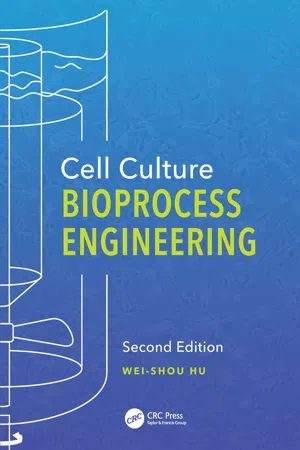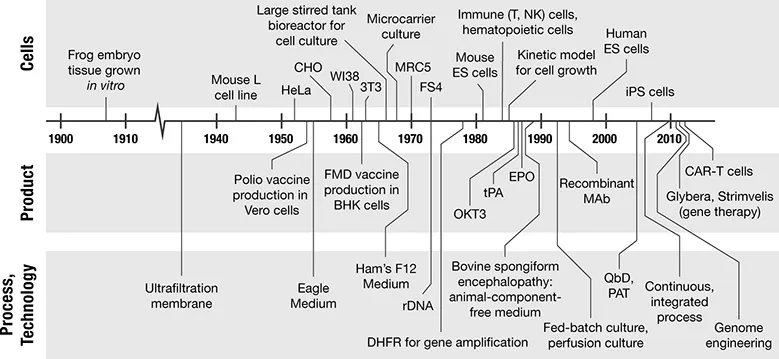
- 453 pages
- English
- ePUB (mobile friendly)
- Available on iOS & Android
Cell Culture Bioprocess Engineering, Second Edition
About this book
This book is the culmination of three decades of accumulated experience in teaching biotechnology professionals. It distills the fundamental principles and essential knowledge of cell culture processes from across many different disciplines and presents them in a series of easy-to-follow, comprehensive chapters. Practicality, including technological advances and best practices, is emphasized.
This second edition consists of major updates to all relevant topics contained within this work. The previous edition has been successfully used in training courses on cell culture bioprocessing over the past seven years. The format of the book is well-suited to fast-paced learning, such as is found in the intensive short course, since the key take-home messages are prominently highlighted in panels. The book is also well-suited to act as a reference guide for experienced industrial practitioners of mammalian cell cultivation for the production of biologics.
Frequently asked questions
- Essential is ideal for learners and professionals who enjoy exploring a wide range of subjects. Access the Essential Library with 800,000+ trusted titles and best-sellers across business, personal growth, and the humanities. Includes unlimited reading time and Standard Read Aloud voice.
- Complete: Perfect for advanced learners and researchers needing full, unrestricted access. Unlock 1.4M+ books across hundreds of subjects, including academic and specialized titles. The Complete Plan also includes advanced features like Premium Read Aloud and Research Assistant.
Please note we cannot support devices running on iOS 13 and Android 7 or earlier. Learn more about using the app.
Information
1
Overview of Cell Culture Processes
An Introduction to Cell Culture: A Historical Perspective
Early Enabling Innovations in Cell Culture

Panel 1.1. Cell Substrate Example
- Tissue explant, limited cell expansion
- e.g., Mouse L, HeLa, BHK, CHO
- e.g., HepG2 (liver), PC12 (neuronal)
- Multipotent, pluripotent
- Capable of directed differentiation in vitro
Different...
Table of contents
- Cover
- Half Title
- Title Page
- Copyright Page
- Table of Contents
- Preface
- 1 Overview of Cell Culture Processes
- 2 Cell Biology for Bioprocessing
- 3 Cell Physiology
- 4 Product Quality and Process
- 5 Stoichiometry and the Kinetics of Cell Cultivation
- 6 Cell Line Development
- 7 Medium Design for Cell Culture Processing
- 8 Cell Culture Bioreactors
- 9 Fed-Batch Culture Processes
- 10 Continuous Cell Culture Processes
- 11 Oxygen Transfer in Cell Culture Bioreactors
- 12 Scaling Up and Scaling Down for Cell Culture Bioreactors
- Appendix A: Cell Culture Process Data Analysis
- Appendix B
- Index